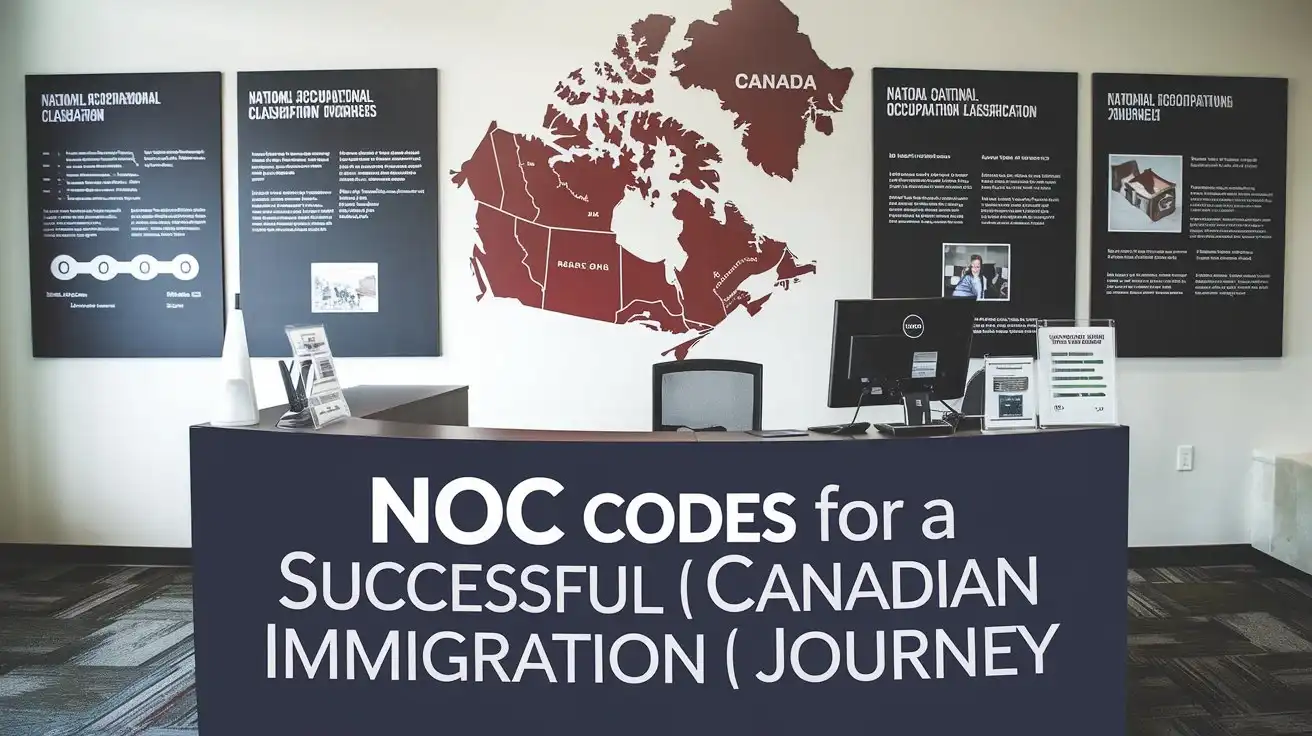

If you plan to embark on your immigration journey, one of the most crucial steps is selecting the right National Occupation Classification (NOC) code. It might not seem like a big deal initially, but this little code can make or break your Canadian dreams.
Wondering how? Different NOC codes qualify for various immigration streams. If you pick the wrong one, it could lead to unnecessary complications or even rejection of your application.
Through this article, let us explore NOCs' relevance and how to choose the proper one based on your experience and needs.
The National Occupation Classification (NOC) is a government-standardized system in Canada that classifies and categorizes occupations based on duties and skill levels.
It plays a significant role in defining qualifications and opportunities in the Canadian job market.
The federal government assigns each occupation a unique code and classifies them into a specific category.
Selecting the proper NOC code is vital for successful immigration. It determines eligibility for different immigration programs, such as Express Entry or Provincial Nominee Programs (PNPs). Each program may have specific NOC code requirements, and an incorrect selection can negatively affect your immigration application.
The NOC code provides valuable data and insights about the Canadian labour market. This will help employers, job seekers, and policymakers become aware of the trends in job demands, and skills shortages across various sectors in Canada.
In 2021, the authorities updated the National Occupation Classification (NOC) system by introducing the Training, Education, Experience, and Responsibilities (TEER) framework.
This TEER framework categorizes occupations based on the necessary qualifications to perform the job effectively.
The TEER (Training, Education, Experience, and Responsibilities) system categorizes occupations in Canada based on the level of education and training required. Understanding these categories deeply can help you identify the appropriate NOC code for your profession.
TEER Level | Description | Examples |
TEER 0 | Management occupations | Advertising, marketing and public relations managers; Financial managers |
TEER 1 | Occupations that usually require a university degree | Financial advisors; Software engineers |
TEER 2 | Occupations that usually require a college diploma, apprenticeship training of 2 or more years, or supervisory occupations | Computer network and web technicians; Medical laboratory technologists |
TEER 3 | Occupations that usually require a college diploma, apprenticeship training of less than 2 years, or more than 6 months of on-the-job training | Bakers; Dental assistants and dental laboratory assistants |
TEER 4 | Occupations that usually require a high school diploma or several weeks of on-the-job training | Home child care providers; Retail salespersons and visual merchandisers |
TEER 5 | Occupations that usually need short-term work demonstration and no formal education | Landscaping and grounds maintenance labourers; Delivery service drivers and door-to-door distributors |
Let us explore some more jobs with various TEER levels, their corresponding NOC codes, and examples. These details may be as essential for job seekers and immigration candidates looking for a role in the Canadian job market.
TEER Level | NOC Code | Job Title |
TEER 0 | 10011 | Human resources managers |
| 10012 | Purchasing managers |
| 10019 | Other administrative services managers |
| 21211 | Data scientists |
TEER 1 | 21220 | Cybersecurity specialists |
| 21221 | Business systems specialists |
TEER 2 | 32100 | Opticians |
| 32101 | Licensed practical nurses |
| 32102 | Paramedical occupations |
TEER 3 | 53121 | Actors, comedians and circus performers |
| 53122 | Painters, sculptors, and other visual artists |
| 63200 | Cooks |
| 63201 | Butchers - retail and wholesale |
| 63202 | Bakers |
| 63210 | Hairstylists and barbers |
TEER 4 | 14111 | Data entry clerks |
| 44101 | Home support workers, caregivers, and related occupations |
TEER 5 | 65200 | Food and beverage servers |
| 65201 | Food counter attendants, kitchen helpers, and related support occupations |
| 85111 | Oil and gas drilling, servicing, and related labourers |
Choosing the right NOC code can be challenging because so many available codes exist.
To begin with, you may visit the website of the Government of Canada's NOC page to search for your job title. If the exact job title is unavailable, try using a more general term to find the closest match.
Once you have the NOC code, verify it by checking the primary duties on the government website's Employment and Social Development Canada (ESDC) page to ensure it aligns with your responsibilities.
You may visit the Canadian government's NOC page as a primary resource for more information.
If you are having trouble finding the appropriate job title or verifying other essential details in the NOC system, don't worry. At ImmiLaw Global, with years of expertise and the assistance of our experienced immigration consultants and lawyers, we will help you find your job title, code, and TEER, making your immigration journey smoother and more efficient.
There may be instances when you cannot find your NOC in the provided table. In such cases, you may follow these steps to locate it:
If you continue to need help finding your NOC or need additional guidance, our team at ImmiLaw Global is ready to assist you in this process.
Once you confirm the correct NOC code for your job, add this information to your immigration application. Ensure that the NOC code accurately reflects your actual role and responsibilities, which significantly impacts your eligibility for various immigration pathways.
Also, represent your job title and duties accurately to avoid any issues related to misrepresentation.
If you need help immigrating to Canada and finding the proper NOC code, contact ImmiLaw Global. Our team of experts, including experienced immigration consultants and lawyers, is here to help you every step of the way.
Feel Free to contact us for more details
Read More: Move Your Business to Canada under the Guidance of a Canadian Immigration Lawyer